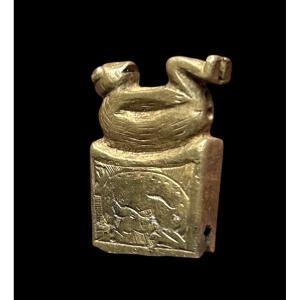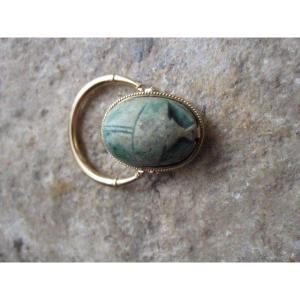Bird fibulae became popular in the late 5th century and would remain popular throughout the 6th century. They were usually worn in pairs, often in combination with a "rayed head" brooch. These fibulae belonged to upper class individuals. The importance of the bird motif probably lies in the aristocratic cult of the god Wodan, who, like his Scandinavian counterpart Odinn, was capable of transforming into a bird. The raven was also known as "a beast of battle." Eagles, ravens and wolves are known to be scavengers of dead warriors. They believed that animals brought spirits to the other world. Source: Cf. Menghin: The Merovingian period: Europe without borders & Reallexikon der Germanischen Altertumskunde Bd. 8, Berlin 1994, S. 541-582m (Fibel and Fibeltracht).
Condition: very good condition, complete with cover plate, pin missing.






















 Le Magazine de PROANTIC
Le Magazine de PROANTIC TRÉSORS Magazine
TRÉSORS Magazine Rivista Artiquariato
Rivista Artiquariato
